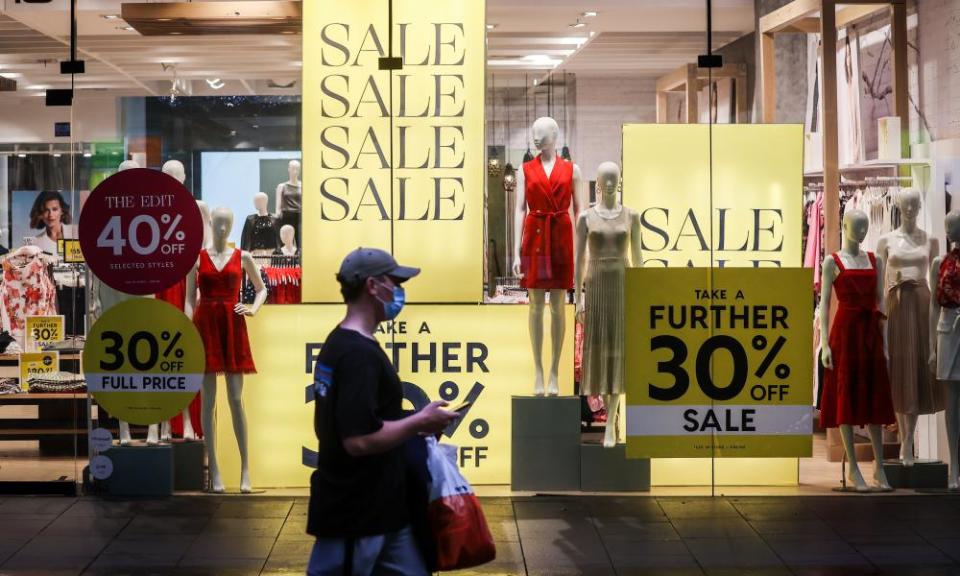It's not just the pandemic, stupid. Australia's economy has been weak for years

One of the weird consequences of Covid-19 is that it has actually hidden the weakness of the economy. When things are going to hell due a pandemic, it gets all the blame, and yet, as the latest inflation figures show, Australia’s economy has been weak for many years now.
The consumer price index figures for December, released yesterday by the Australian Bureau of Statistics, show the continual impact of the pandemic. After a record fall of 1.9% in the June quarter last year, followed by an absurd 1.6% jump in September, the last three months of 2020 saw a 0.8% increase in prices:
And yet, even with prices rising 2.4% in just six months, annual inflation grew just 0.9% in 2020:
It is easy to excuse that pathetic result as being a case of “oh well, it’s the pandemic”. While of course the pandemic has had a massive impact, it is nowhere near the full story.
The Reserve Bank’s underlying “trimmed mean” measure of inflation (or “core inflation), which removes the one-off and erratic rises and falls, shows that blaming all our problems on the pandemic is greatly misguided.
In just one of the past 20 quarters core inflation has been above 0.5%. Given the bottom of the Reserve Bank’s target for annual inflation is 2%, that means we have now gone five years with inflation below the RBA’s target.
That low price growth reflects a lack of demand in the economy, a lack of wage growth and a decidedly limp state of economic affairs.
It is also set to continue. The latest government bond yields, which are a good estimate of future inflation, suggest little hope of inflation going above 2% in the next year:
And even if we suggest that the annual CPI growth of 0.9% – up from 0.7% in September last year – shows some meagre sign of improvement, the reality is that, for Australians who don’t smoke (most of us), prices barely increased at all.
Tobacco jumped 20% in price over the past year due to the latest excise increase, well above even the large 8% increase in beef and veal prices:
Tobacco price rises accounted for over 40% of the December increase in all of the CPI.
Without tobacco, inflation was around 0.2% last year.
If you had been wanting to save money, chicken, lamb and vegetables were the best things to eat, and washing it down with a beer, as its price rose less than other alcohol.
The inflation figures also show how the real impact of the pandemic has been on services rather than goods.
While the prices of goods did fall and rise a bit more than usual last year, it was nothing compared to the hit service prices took when lockdowns effectively prevented such activity:
These prices were also affected by government decisions – most crucially on childcare.
Last year, when the government introduced a temporary period of free childcare, prices obviously plummeted. Now that the period is over they have steeply risen back to pre-pandemic levels:
Without the childcare rises, inflation in the December quarter would have been just 0.5% rather than 0.9%.
This actually means that those non-smokers with no children in childcare saw prices rise just 0.1% in the last three months of 2020.
These government decisions also affected price rises around the country.
In the December quarter, Melbourne had the highest amount of inflation – with prices going up 1%.
But much of that was due to childcare prices there rising more than other capital cities because Victoria’s lockdown kept childcare policies in place longer than other states.
It meant childcare prices rose 208% in Melbourne in the December quarter compared with 18% in Sydney. But if we exclude childcare, Melbourne and Sydney’s inflation in December was essentially the same:
Perth was the only city to have overall prices fall in 2020. But again, this was due not to natural demand or supply, but the state government policy of offering a $600 electricity credit on 1 November.
That had the impact of cutting electricity prices by two-thirds:
And so we continue to see the pandemic create a mess with the economic data – crazy price rises and falls due to lockdowns, and governments madly trying to come up with ways to abate the impact of income and job losses.
But when we look through the extremes we see the same weak demand that was there well before the pandemic.
A weakness that is now more than half a decade long.

 Yahoo Finance
Yahoo Finance 